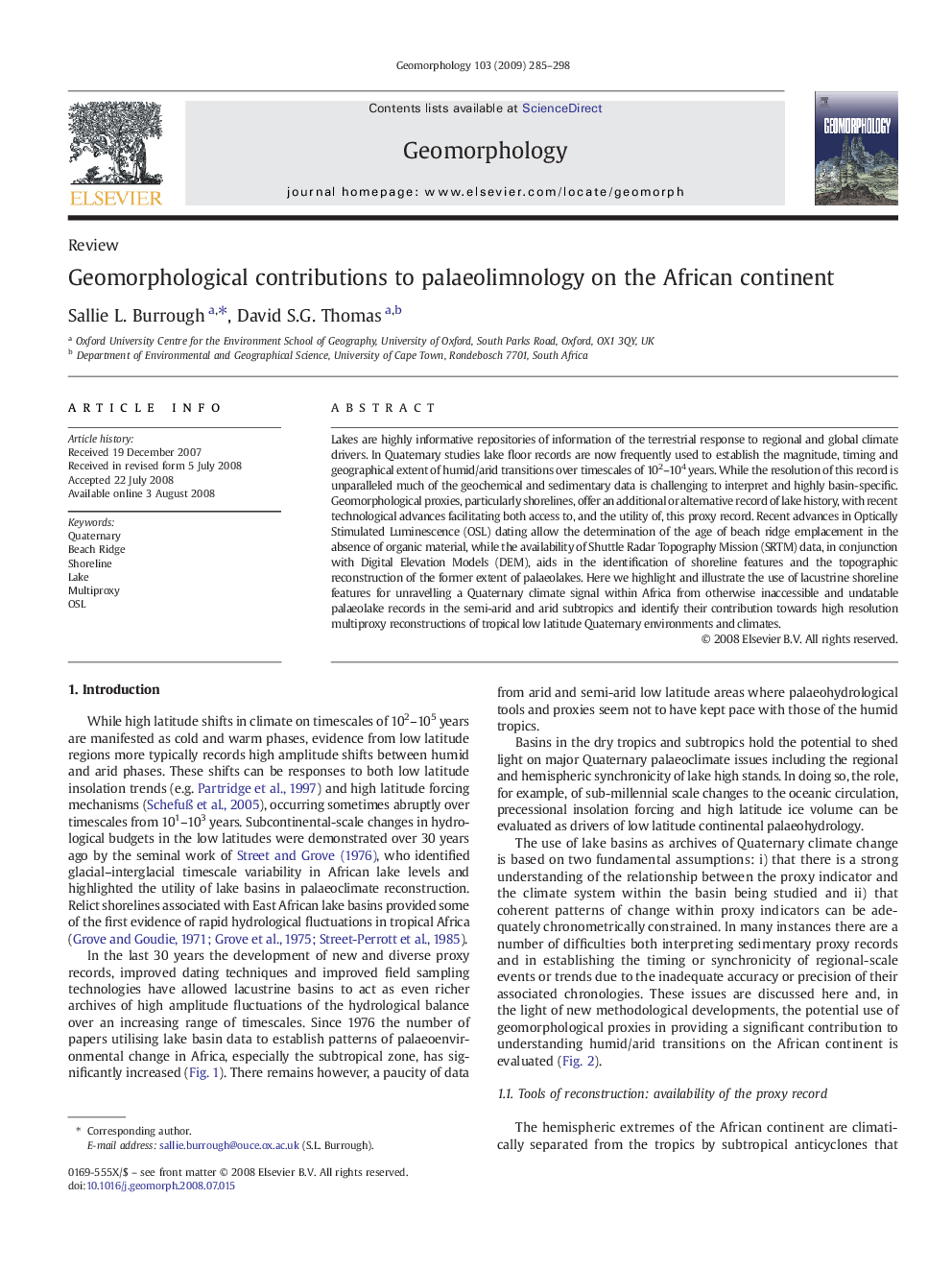| Article ID | Journal | Published Year | Pages | File Type |
|---|---|---|---|---|
| 4686554 | Geomorphology | 2009 | 14 Pages |
Lakes are highly informative repositories of information of the terrestrial response to regional and global climate drivers. In Quaternary studies lake floor records are now frequently used to establish the magnitude, timing and geographical extent of humid/arid transitions over timescales of 102–104 years. While the resolution of this record is unparalleled much of the geochemical and sedimentary data is challenging to interpret and highly basin-specific. Geomorphological proxies, particularly shorelines, offer an additional or alternative record of lake history, with recent technological advances facilitating both access to, and the utility of, this proxy record. Recent advances in Optically Stimulated Luminescence (OSL) dating allow the determination of the age of beach ridge emplacement in the absence of organic material, while the availability of Shuttle Radar Topography Mission (SRTM) data, in conjunction with Digital Elevation Models (DEM), aids in the identification of shoreline features and the topographic reconstruction of the former extent of palaeolakes. Here we highlight and illustrate the use of lacustrine shoreline features for unravelling a Quaternary climate signal within Africa from otherwise inaccessible and undatable palaeolake records in the semi-arid and arid subtropics and identify their contribution towards high resolution multiproxy reconstructions of tropical low latitude Quaternary environments and climates.
